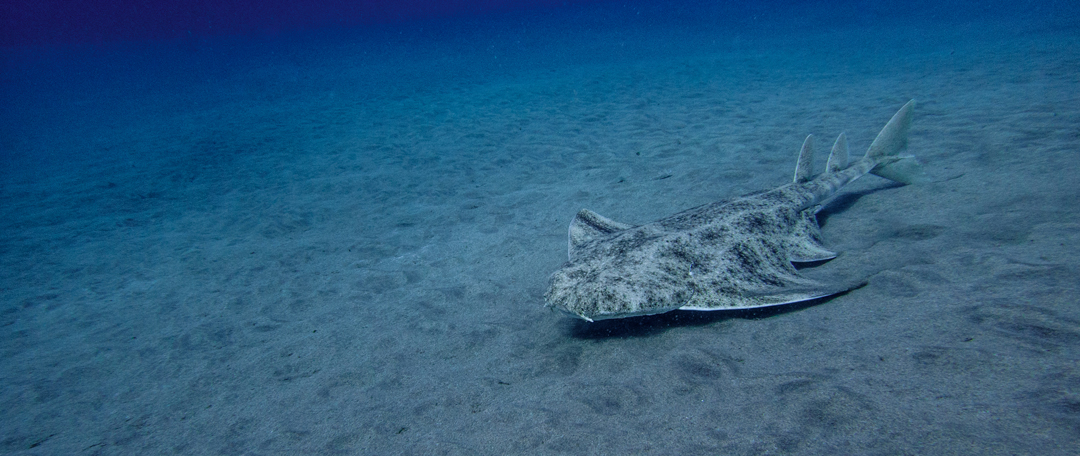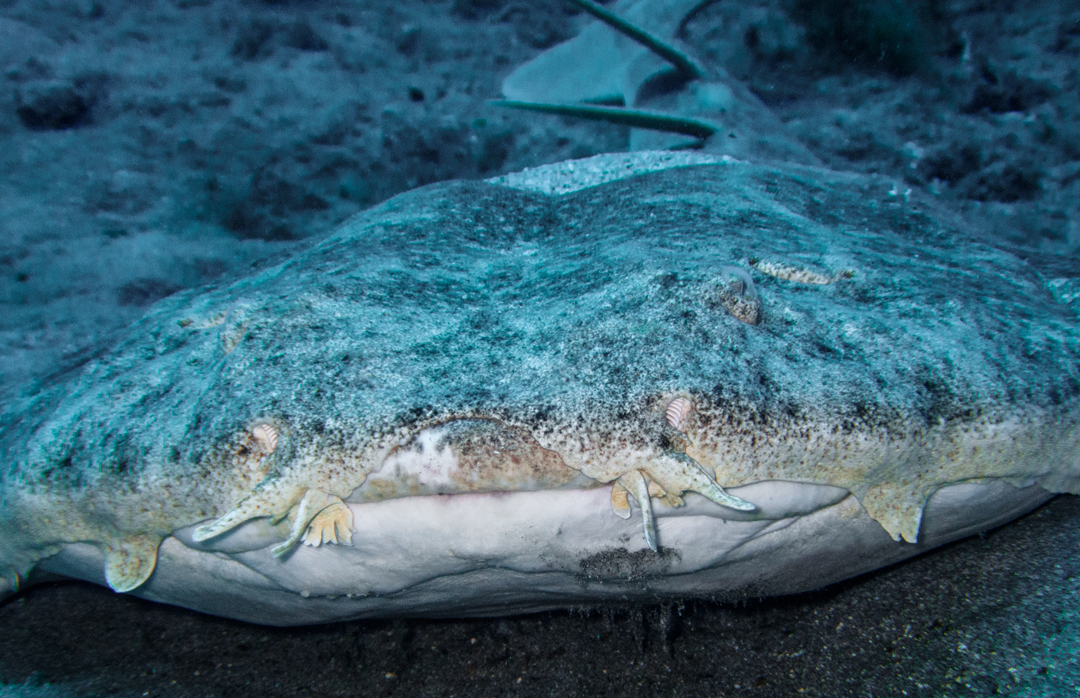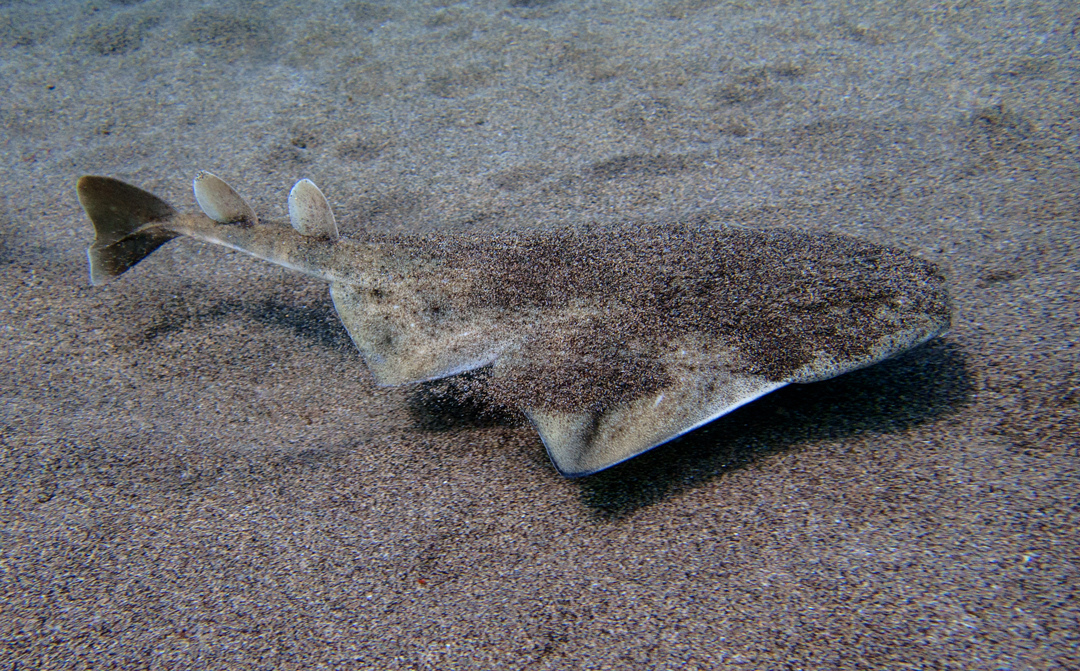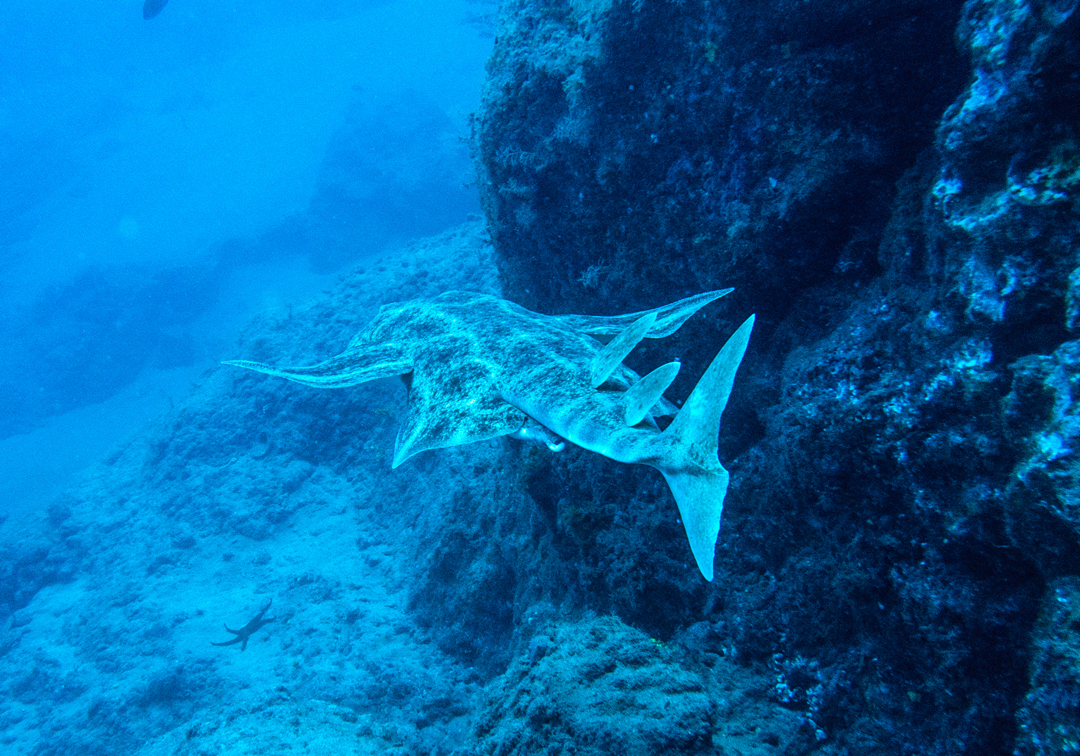Slipping silently away
Scientists devise conservation plan for angel sharks in the Eastern Atlantic and the Mediterranean Sea
By their very nature, angel sharks are not exactly the scene-stealing sharks of the seas. Camouflaged ambush predators that lie in wait for their prey, they settle subtly onto the sandy seafloor along shallow coastal and continental shelf habitats. And it is for this reason that this family of flattened sharks (Family Squatinidae) are one of the most highly threatened in our global oceans today. Innocuous and seafloor-dwelling, they are often caught in trawling gear and tangled in gillnets. The Save our Seas Foundation has prioritised support for conservation efforts aimed at this family of sharks over the years, funding project leader Eva Meyer’s work with The Angel Shark Project in the Canary Islands and around Europe.

Last year saw some bittersweet successes for angel sharks and their conservation. First, three species of angel shark received full protection in the Canary Islands. Of the 22 different angel shark species found within the Squatinidae family, the sawback angelshark (Squatina aculeata), the smoothback angelshark (Squatina oculata) and the Angelshark (Squatina squatina) are three of the most threatened. All three are classified as “Critically Endangered” by the IUCN RedList of Threatened Species. Towards the end of 2019, in reaction to the troubling declines of populations of all three species throughout the Mediterranean Sea, The Mediterranean Angelsharks: Regional Action Plan was launched. All these protective actions signalled that we risk losing these species if governments, scientists, conservationists, and policymakers do not act decisively amidst the complex geopolitics of the Mediterranean region. They were also, however, a symbol of success for the years of hard awareness-raising work by project leaders like Eva Meyers and her colleagues.

Photo © Luis Miguel Estevez | Shutterstock
This year saw the first review of the historical and current global range of the sawback angelshark, smoothback angelshark and the Angelshark published. The paper, Extinction risk and conservation of critically endangered angel sharks in the Eastern Atlantic and the Mediterranean Sea, was released earlier this year in the ICES Journal of Marine Science. Lead author Julia Lawson and her co-authors, including SOSF project leader Eva Meyers and SOSF scientific advisor Sarah Fowler, also assessed the suite of protection measures in place for these species: internationally, regionally, and nationally. This major synthesis updates what we currently know about these species and develops a basis for a Conservation Strategy that the authors intend to help guide a host of swift interventions, from research to management and policy.

Photo © Luis Miguel Estevez | Shutterstock
The team of authors trawled through the scientific literature, catch reports and data from landing sites where sharks were brought ashore. They interviewed experts and amassed the information from the Angel Shark Conservation Network Sightings Map, the Shark Trust’s Angler Recording Project and the Marine Fish Information Services database. They aimed to uncover the details of where populations of these sharks could still be found, and where they may have gone extinct, so that conservation actions and funding could be most efficiently directed to save these species. Their findings were alarming: the current geographic extent of where all three species are found appears to have halved. Moreover, the populations of each species are in freefall, with declines of up to 51% reported for the sawback angelshark, 48% for the smoothback angelshark and 58% for the Angelshark. There are a wealth of measures now in place to better manage and conserve Angelsharks, but less than half of these policies include protection for the sawback and smoothback angelsharks.

Photo © Luis Miguel Estevez | Shutterstock
The result is that all three species will retain their IUCN Critically Endangered status. But the authors envisage some key goals as part of the Eastern Atlantic and Mediterranean Angel Shark Conservation Strategy. The priority is to reduce the mortality of angel sharks in fisheries. There are some hopeful signs that this can work: evidence from the Northeast Atlantic showed that the Angelshark population had improved its status off the western coasts of the British Isles because fewer sharks now die in fisheries. There is also more public awareness and reporting. The second goal is to identify, investigate and protect critical angel shark areas. West Africa is considered a conservation priority, with recent reports of sawback and smoothback angelsharks there highlighting the need for species-specific surveys. But the only areas of the Mediterranean Sea where all three species of angel shark are still found were the Aegean Sea, the Turkish Mediterranean coast, and the central Mediterranean basin near Tunisia and Sicily. The Canary Islands off the Spanish coast were regarded as a lifeboat for the Angelshark. The authors believed that the reason for the healthy, productive Angelshark population there lies primarily in the ban on trawling effected by a 1986 Spanish Royal Decree.

Photo © Luis Miguel Estevez | Shutterstock
Finally, the authors outlined that human interactions with angel sharks need to be defined so that their potentially harmful impacts can be minimised. Achieving all three goals, and each of the specific actions outlined under each vision, will require a collaborative effort from scientists, fishers, governments and conservationists. But, if the publication of this paper illustrates anything, it is that concerned people can be brought together from across disciplines and different regions to save these species.
Reference: Lawson, J.M., Pollom, R.A., Gordon, C.A., Barker, J., Meyers, E.K., Zidowitz, H., Ellis, J.R., Bartolí, Á., Morey, G., Fowler, S.L. and Alvarado, D.J., 2020. Extinction risk and conservation of critically endangered angel sharks in the Eastern Atlantic and Mediterranean Sea. ICES Journal of Marine Science, 77(1), pp.12-29.
Read the paper here.
